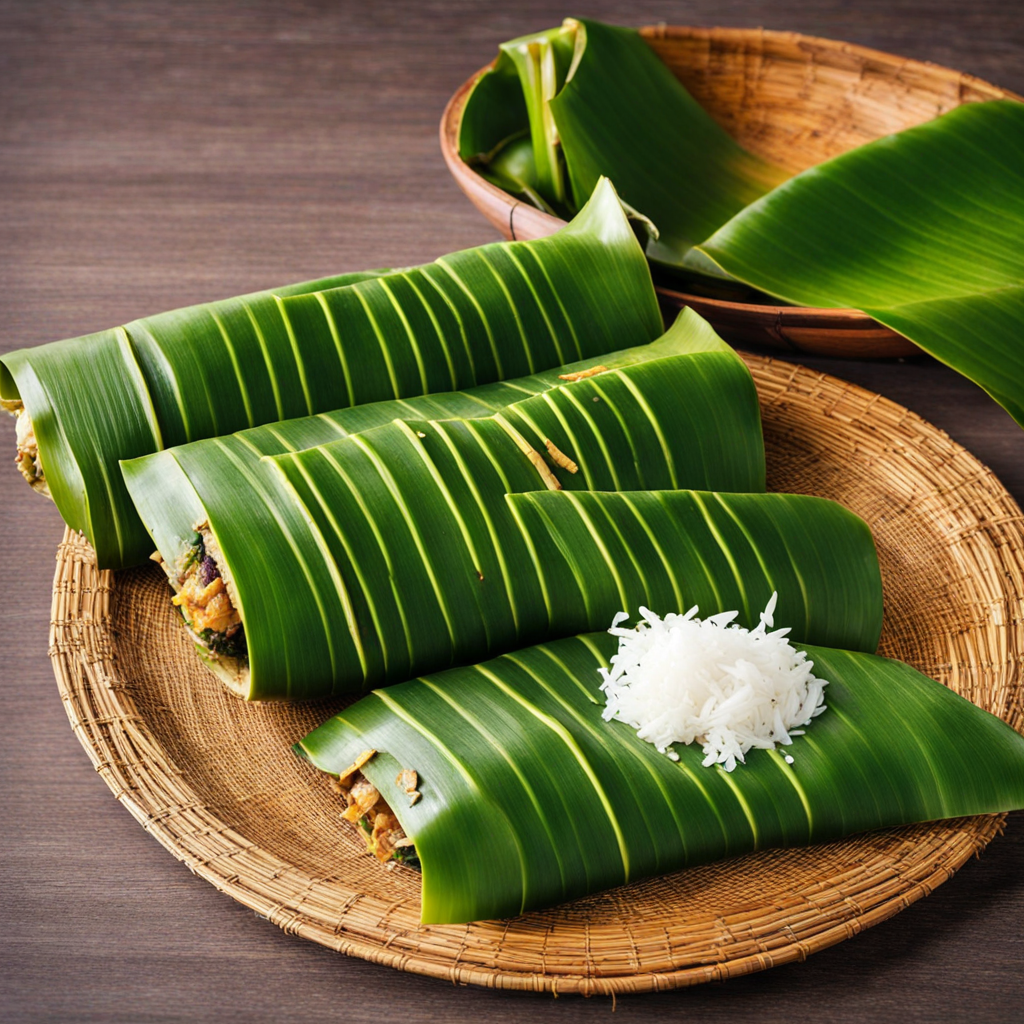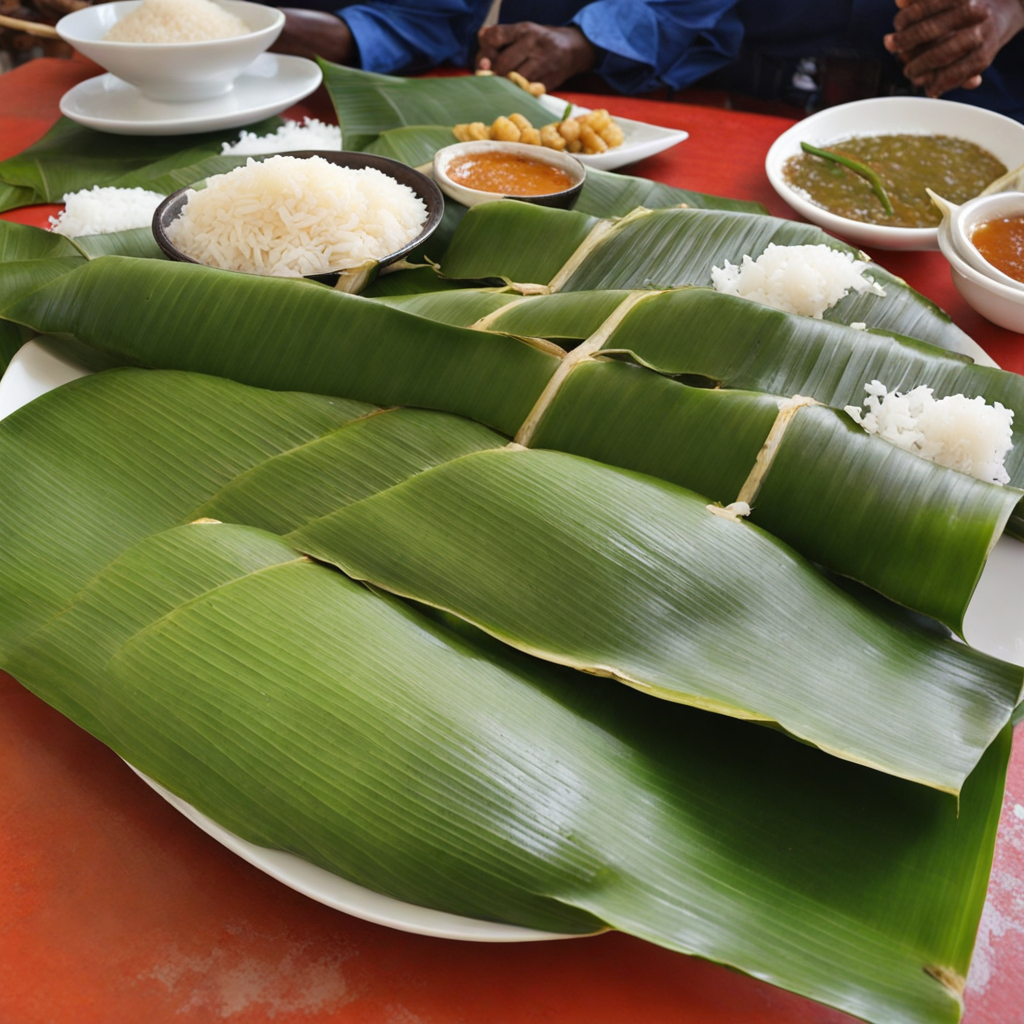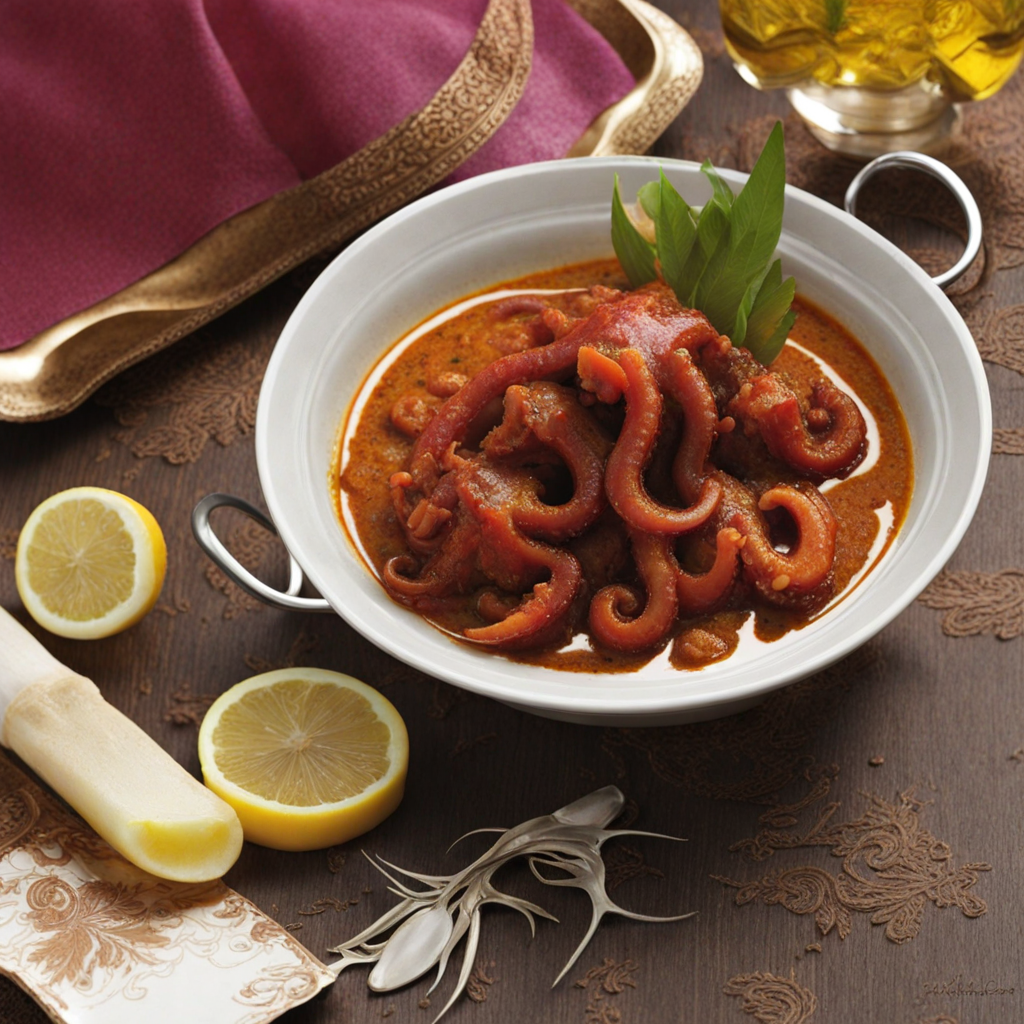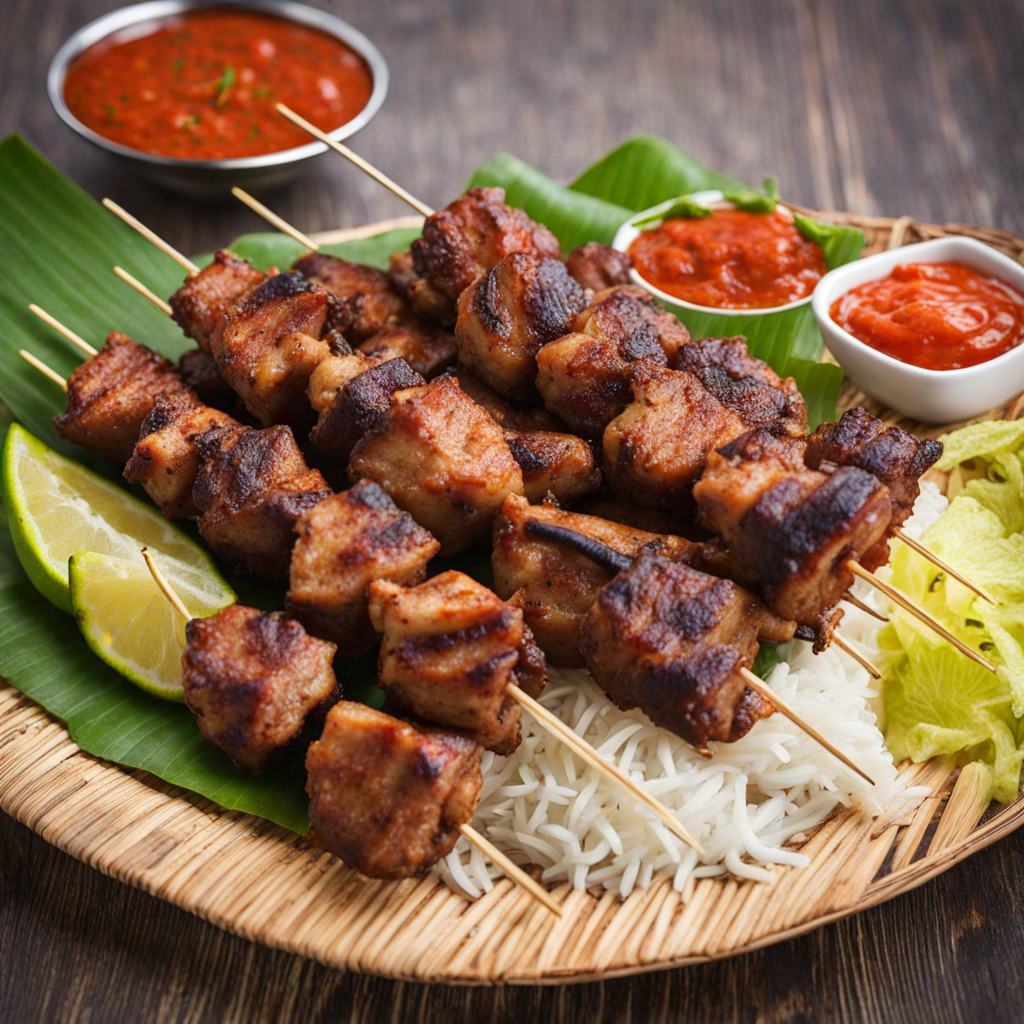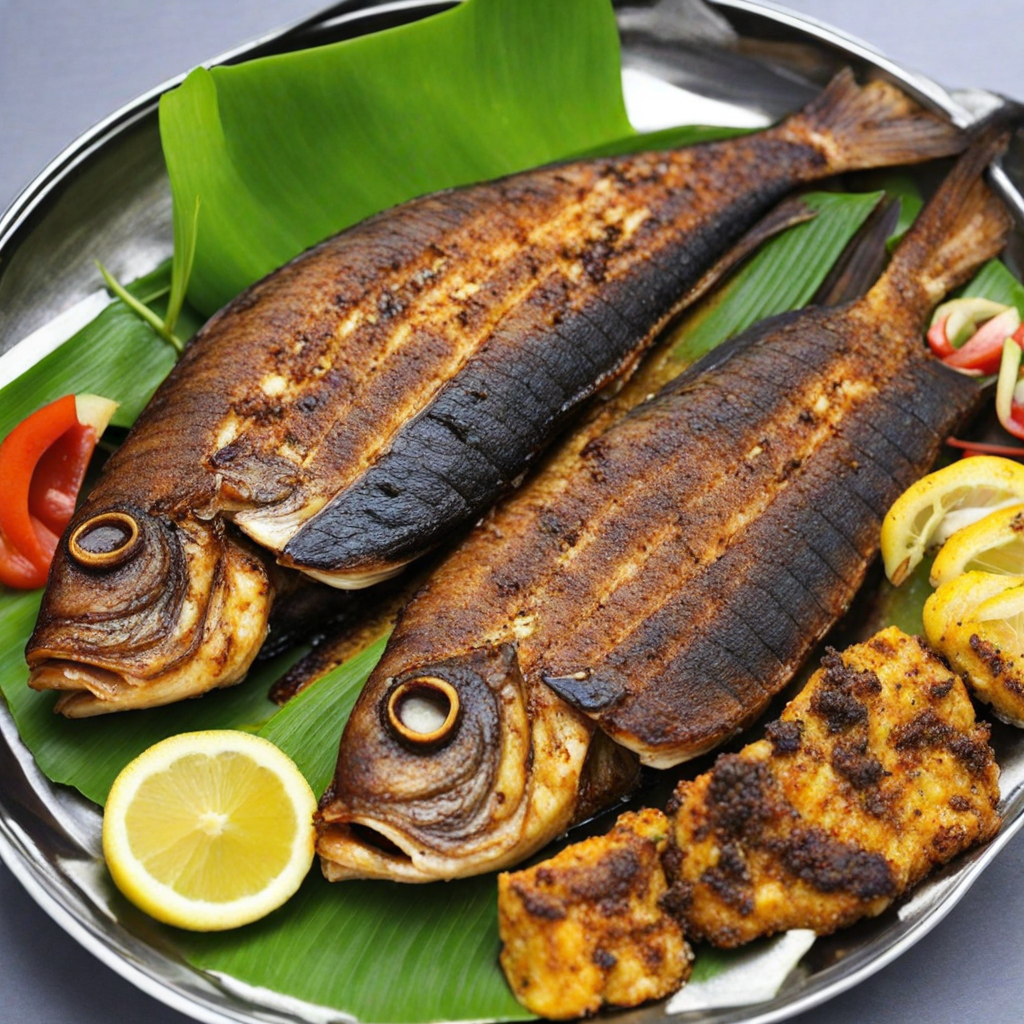Madaba
Madaba is a delightful culinary gem from the Comoros, renowned for its vibrant flavors and unique blend of spices. This dish typically features a base of rice, which serves as a canvas for a medley of ingredients that reflect the island's rich agricultural heritage. Fresh vegetables, such as tomatoes, onions, and green peppers, are sautéed with local spices like garlic and ginger, infusing the rice with a tantalizing aroma. The use of coconut milk adds a creamy texture that harmonizes beautifully with the spices, creating a dish that is both comforting and exotic. One of the standout characteristics of Madaba is its incorporation of seafood, a staple in Comorian cuisine. Fresh fish, often caught the same day, is marinated in a blend of local spices before being cooked to perfection. The combination of tender fish and the fragrant rice makes every bite a delightful experience. Additionally, some variations of Madaba may include chicken or goat meat, offering a heartier option for those who prefer meat over seafood. The balance of flavors—savory, sweet, and slightly spicy—truly encapsulates the essence of the Comoros. Finally, Madaba is often garnished with fresh herbs such as cilantro or parsley, providing a bright finish to the dish. It is commonly served with a side of spicy sauce, allowing diners to customize the heat to their liking. The dish is not just a meal; it’s a celebration of the rich cultural tapestry of the Comoros, where each bite invites you to explore the vibrant history and traditions of the islands. Whether enjoyed at a local eatery or crafted at home, Madaba promises a memorable culinary adventure that will leave your taste buds yearning for more.
How It Became This Dish
The History of Madaba: A Culinary Gem of Comoros #### Origins and Ingredients Madaba, a traditional dish from the Comoros archipelago, is much more than just food; it is a cultural emblem that reflects the rich heritage and diverse influences of the islands. Comprising three main islands—Grande Comore, Mohéli, and Anjouan—the Comoros are located in the Indian Ocean, off the eastern coast of Africa. The islands' history as a trading hub has created a melting pot of cultures, with influences from Africa, Arabia, Persia, and France. At its core, Madaba is a dish made from a base of rice, often combined with various ingredients such as fish, chicken, or vegetables, and flavored with a blend of local spices and herbs. The word "Madaba" itself is believed to be derived from the Arabic word "madaba," meaning to mix or blend, which aptly describes the dish's preparation and presentation. The primary ingredients of Madaba reflect the agricultural bounty of the islands. Rice is a staple food in Comoros, cultivated extensively due to the islands' fertile volcanic soil and abundant rainfall. Coconut, which is plentiful in the region, adds a unique flavor profile to the dish. The use of fresh herbs like coriander and scallions, along with spices such as turmeric and cardamom, showcases the islands' vibrant culinary traditions. #### Cultural Significance Madaba is deeply woven into the social and cultural fabric of the Comorian people. It is more than just a meal; it is a dish that signals hospitality, celebration, and community. Traditionally, Madaba is prepared for special occasions and gatherings, such as weddings, religious festivals, and family reunions. The act of cooking and sharing Madaba is a communal experience that reinforces social bonds and cultural identity. In Comorian culture, food is a means of storytelling. Each dish carries with it the history, traditions, and values of the people. Madaba, with its diverse ingredients and flavors, represents the islands' history of trade and cultural exchange. It embodies the synthesis of various culinary traditions, reflecting the intermingling of different peoples over centuries. The dish is often served in a communal style, with family and friends gathered around a large platter. This practice fosters a sense of togetherness, as individuals share not only food but also stories, laughter, and memories. The preparation of Madaba is often a family affair, with members contributing to the cooking process, passing down techniques and recipes from generation to generation. #### Development Over Time The history of Madaba cannot be divorced from the broader historical context of the Comoros. The islands have experienced waves of migration and influence, starting with the earliest settlers from Africa and later those from the Arab world, as well as European colonizers. During the Arab trade routes' zenith in the 7th and 8th centuries, the Comoros became a pivotal stop for merchants traveling between Africa and the Middle East. This era introduced new spices, cooking methods, and culinary philosophies that would shape the evolution of Madaba. Ingredients such as saffron, cinnamon, and various legumes became integral to Comorian cuisine, enriching the flavor profile of traditional dishes like Madaba. Colonial rule in the late 19th and early 20th centuries brought further influences, especially from the French. The introduction of new agricultural practices and crops led to an increase in variety and accessibility of ingredients. The French also influenced cooking techniques and presentation, which can be observed in the modern iterations of Madaba that may include elements like sauces and garnishes reminiscent of French cuisine. In contemporary times, Madaba has retained its traditional roots while also adapting to changing tastes and lifestyles. The dish has gained popularity beyond the shores of Comoros, particularly among the diaspora and food enthusiasts interested in exploring the culinary heritage of the islands. This globalization has led to variations of Madaba that incorporate ingredients and flavors from other cultures, showcasing the versatility of the dish. #### Modern Interpretations and Global Influence Today, the essence of Madaba remains intact, but it is increasingly being reinterpreted by chefs and home cooks alike. With the rise of food tourism and an interest in global cuisine, Madaba has found its way onto menus in restaurants worldwide, often presented as an exotic yet comforting dish. Modern interpretations of Madaba may include fusion elements, such as incorporating local ingredients from the regions where it is served. For instance, a Madaba dish served in a Western country might feature local seafood or vegetables, while still honoring the traditional spices and cooking methods. This adaptability speaks to the resilience of Comorian culture and the enduring significance of Madaba as a culinary symbol. Additionally, food festivals and cultural events celebrating Comorian heritage have helped to elevate Madaba's profile on the global culinary stage. These events not only highlight the dish but also serve as platforms for cultural exchange, where people can learn about the history, traditions, and stories behind the food. #### Conclusion Madaba is a culinary treasure that encapsulates the spirit of the Comoros. Its origins rooted in the islands' rich history of trade and cultural exchange, it has evolved through the centuries while maintaining its significance as a communal and celebratory dish. The cultural importance of Madaba extends beyond its ingredients and preparation; it represents the stories, connections, and shared experiences of the Comorian people. As the world becomes increasingly interconnected, Madaba continues to thrive, inviting new interpretations while remaining a beacon of cultural identity. Whether enjoyed in a family gathering in Comoros or featured on an international menu, Madaba serves as a delicious reminder of the islands' vibrant heritage and the power of food to bring people together.
You may like
Discover local flavors from Comoros


